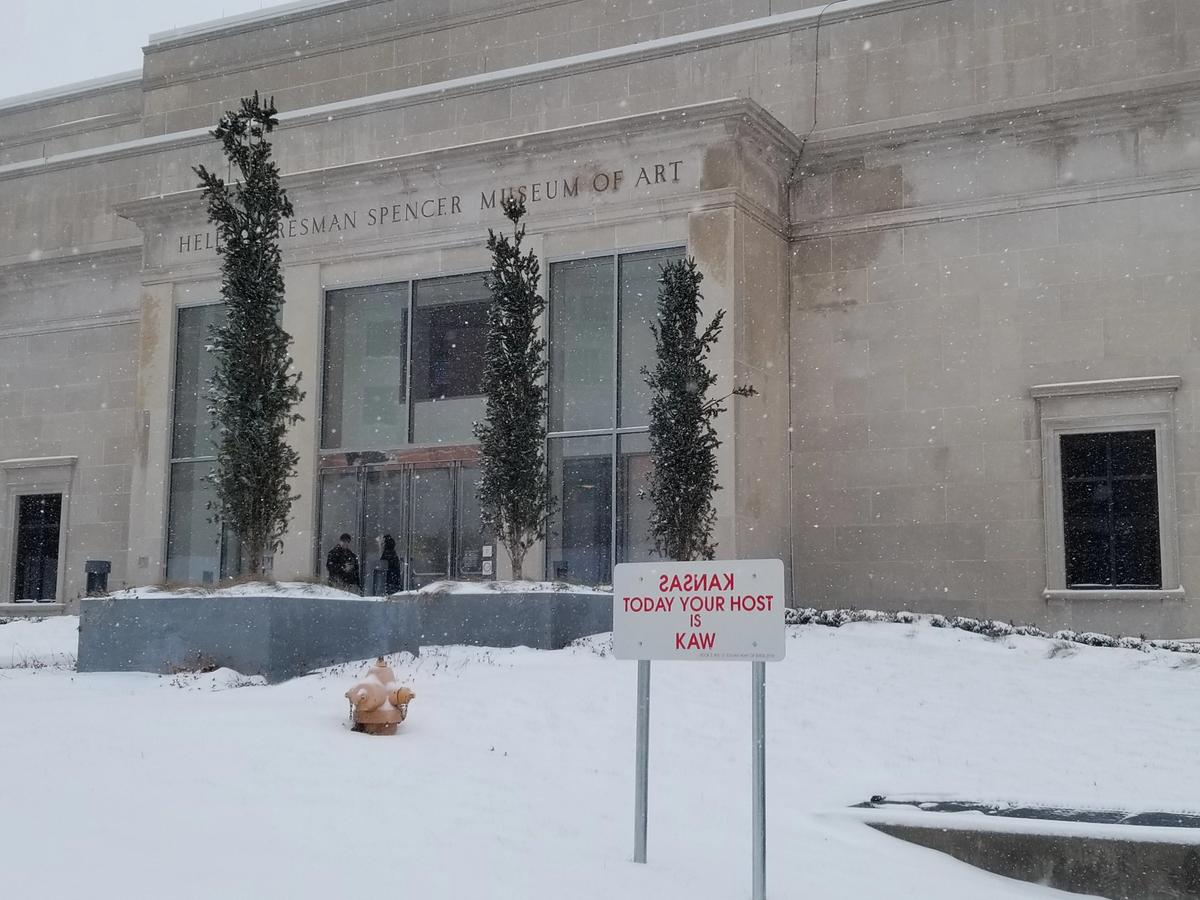The Indigenous artist Hock E Aye Vi Edgar Heap of Birds (Cheyenne/Arapaho) has seen an exhibition of his art reinstalled after the show was vandalised last month and one work was stolen earlier this month.
“As to why these acts of violence occur, I can only suggest that Indigenous citizens proclaiming their own culture and history plus self-identified power makes some non-Natives nervous,” the artist tells The Art Newspaper. “The forces in the US are shifting to a reality which is based on equity, not past violence. This change is for the greater good.”
The exhibition Native Hosts, installed outside of the Spencer Museum of Art at the University of Kansas in Lawrence, comprises a series of five text-based works where the colonial name of a location is printed backwards, while the land’s original Indigenous occupants is printed forwards.
The installation was targeted by unidentified individuals who bent and toppled four of the five panels on 4 September. The four works were removed to prevent further damage and the fifth panel remained on display.
The remaining work was also stolen later in the month before being recovered after the museum received a tip via an anonymous caller. No one has been charged in connection to the theft or vandalism of the works, but the case has been turned over to the Douglas County district attorney.
Edgar Heap of Birds graduated from Kansas University in 1976. His work is held in major collections, including the Museum of Modern Art, the Whitney Museum of American Art and the Smithsonian Institution.
In his artist statement, Heap of Birds explains the locations in the work represent historic tribes that were forcibly removed from Kansas to Oklahoma. The work was conceived as part of an annual exhibition that draws from a piece of literature, which this year focused on the book Braiding Sweetgrass: Indigenous Wisdom, Scientific Knowledge, and the Teachings of Plants by Robin Wall Kimmerer (Potawatomi) that explores how Indigenous plant medicine can advance ecological and humanitarian consciousness.
In a joint statement, the director of the museum, Saralyn Reece Hardy, and other museum staff write: “Unequivocally, we condemn this hurtful crime. The implications extend far beyond the felony theft that it is and reach deeply into Native communities that have worked for visibility.”
The statement adds: “These works of art carry many possible meanings: acknowledgment of Native peoples who currently or historically reside on the land where the university exists; the creative work of a highly distinguished Native American university alum; an expression of an Indigenous person’s creativity that belongs on this campus and deserves our respect; public art that is intended as a thought-provoking and educational experience for all who encounter it.


